The history of Kutani ware “Kutani yaki”
The first time we hear of porcelain from the Kutani (nine valleys) Village, was in 1655, in the first year of the Myoreki epoch. Japanese ceramic history has it that stones suitable for porcelain making was found in the Kutani mine of the Daishoji Clan, whereupon Lord Maeda Toshiharu sent Goto Saijiro to the Arita Village in the Hizen province to learn how to make porcelain. Kutani Porcelains from this early period are specifically called Ko-Kutani and are extremely rare. The production of this ware continued for about 50–60 years. Kokutani enjoyed popularity for the next few decades until the Kutani suddenly closed down in 1730. The reasons for this closure are debated.Theories put forward include that supplies of the pigments necessary for the glazing were difficult to find, or that there were financial difficulties. This period of production is now referred to as the Old Kutani (古九谷, Kokutani).
In 1810 – some 80 years later – kutaniyaki was re-established, with the help of several kamamoto or production potters. New overglaze painting techniques from various kamamoto-es were infused in the development of kutaniyaki. 6 different overglazing techniques dominate the new form of kutaniyaki: the Mokubei style, influenced by Chinese ink painting techniques. The colours of green, yellow, purple and dark blue form the basis of the Yoshidaya style. Contrasting the Yoshidaya is the Eiraku style, with its simplistic coatings of gold on the first coat of red colour. The Iidaya style, or the Hachirode breaks away from the conventional nature-themed kutani style, with minute paintings of human figures on a red – gold mix background.The Shoza style is a blend of all four techniques of overglazing.
CATEGORIES:
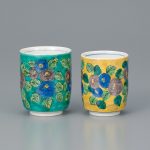 Yunomi, Teacup |
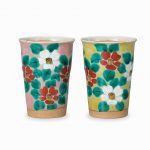 Cup |
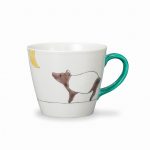 Mug |
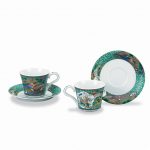 Cup and Saucer |
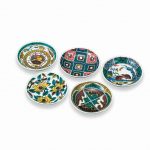 Small Plate |
 Midium Plate |
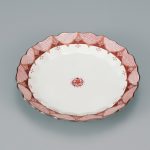 Plate |
 Long plate |
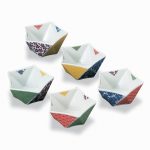 Small Bowl |
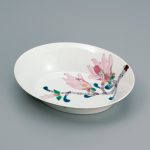 Midium Bowl |
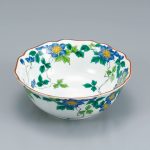 Large Bowl |
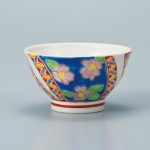 Meshiwan Bowls |
 Donburi deep soup bowl |
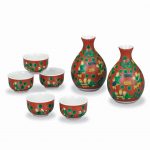 Sake Bottle and Cup |
 Guinomi Sake cup |
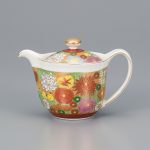 Kyusu Teapot |
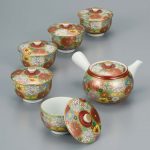 Teaset |
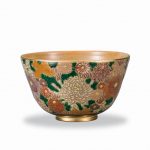 Matcha Chawan Teabowl |
 Small Flower Vase |
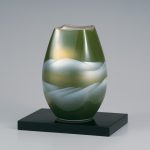 Flower Vase |
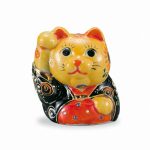 Beckoning Cat |
 Lucky Owl |
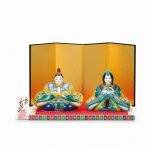 Hina Dall |
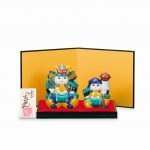 Boy’s Dall |
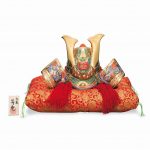 Kabuto Samurai Helmet |
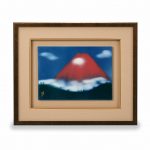 Wall Art Panel |
 Ornament, Sculpture |
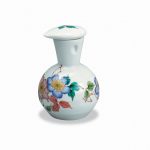 Soy Sauce Cruet |
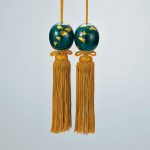 Hanging Scroll Weight |
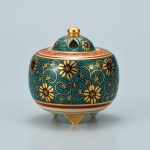 Koro Incense Holder |
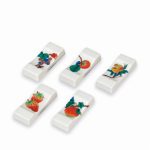 Chopstick Spoon Rest |
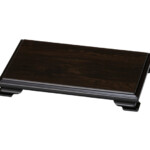 Stand |
 Other |
|


































